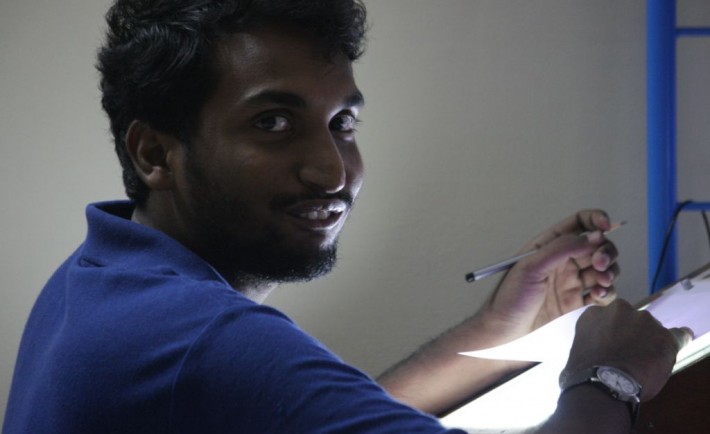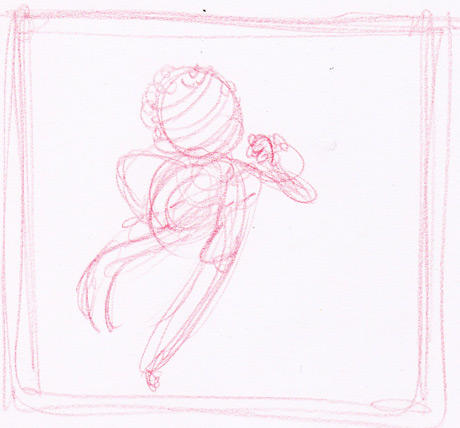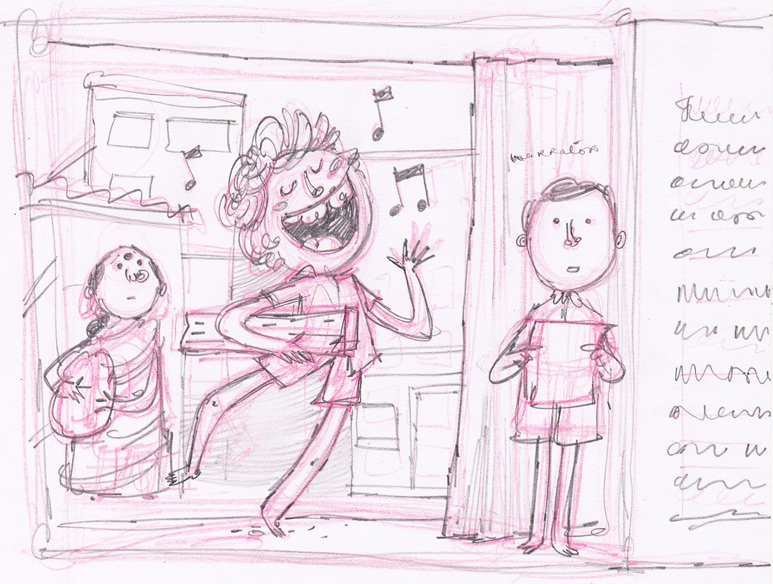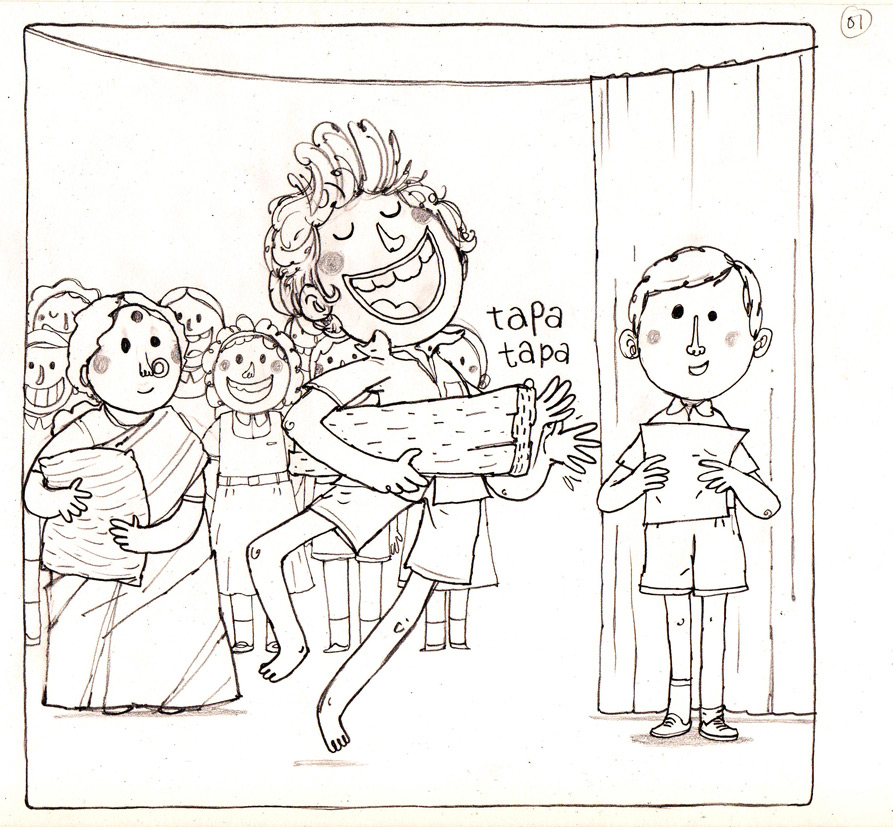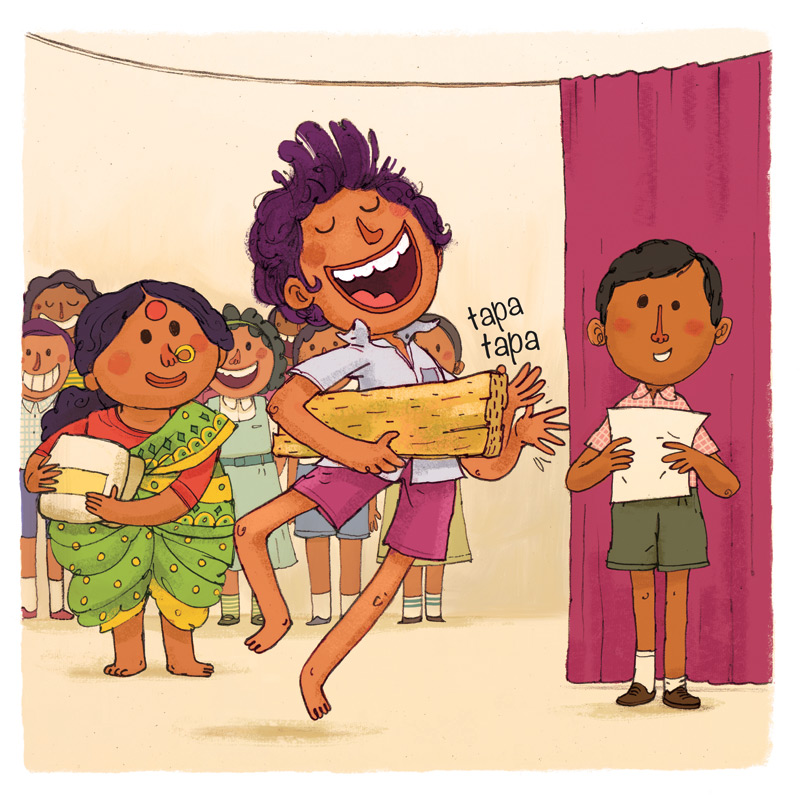- Categories
- CATEGORY
- AGE
- TYPE
The Boy and The Drum written by Umesh P.M. and illustrated by Rajiv Eipe published by Pratham Books is a book written in a play format for you to read aloud to kids even as you enact it. The book gives a very detailed description of how you can actually put it up on stage like a play.
The story is a folktale retold in a wonderful manner about a little boy who is very poor but wants to have a drum. His mother gives him a piece of wood instead, which he takes with happiness and decides to take it around. Then he meets an old man who is in need of wood to cook his food. And then the cycle starts. From wood, to bread to pot to clothes to horse and finally does he does the drum? How does he get it? What does he do with it?
The book passes a simple message to us - Goodness gives more goodness. The boy's giving nature gets him what he wants and despite having things of far more value than a drum, at the end of the day, he just wants his drum. The simplicity in the story is very endearing. Umesh PM does a wonderful job retelling the story. His lyrical poetry and the way he has written it in a play form makes the book unique and fun. I loved the way he has given details on how to enact the play with children and what should each actor in the play be doing. He also gives us tips on how to sing the songs what kind of speed to use and what each of the other characters does on the stage.
Umesh P N is the author of the book 'The Boy and The Drum' He was kind enough to answer our questions regarding the story, how he came about writing it in such a unique manner and his views on theatre and what his three favorite plays are. (He pretends to suffer from temporary memory loss as he struggles to decide which ones to talk about in this interview!)
Thank

IMC: A simple tale, with a lovely lesson and more importantly a superb ending. What made you write the folktake in such a unique manner?
Umesh: Actually, I was working with a theatre group in 2003 or 2004, and the group got an offer to stage a radio play for All India Radio. A basic storyline of The Boy and the Drum was also attached. The reason it became "musical" is
Oddly enough, I do not know when the play was aired eventually, but we had a great time in the recording studio :)
IMC: A lot of children love enacting plays. Unfortunately, as they grow older, they don't have the time from academics to actually spend time enacting and enjoying stories. Do you think introducing theater as a part of our school curriculum will make a difference?
Umesh: I feel theatre is the most powerful medium of both expression and introspection, and any theatre is always going to be immensely beneficial to both the teacher and student. It's good to see that a lot of schools now have some form of theatre activity or the other. Also, theatre need not be used only for entertainment or "didacticism" in the sense of sending out a message, which actually is the poorest way to use the theatre. When the theatre is viewed as "experience before explanation," it can be used to teach concepts in physics, maths, and any other subject. I feel theatre will outlast all forms of "new age" and "traditional" study methods since the theatre is life.
IMC: What is your favorite part of the story?
Umesh: That's a very difficult question :) I really like the boy in that he settles so easily for a piece of wood instead of a drum, and from thereon, he has no hesitation in sharing what he has while expecting nothing in return. That's a quality that would be great for all us to have :) Also visually (thanks to Rajiv Eipe's wonderful and sensitive artwork), I love the whole idea that the wedding band is an all-girl band :)
IMC: Three plays for children which you have enjoyed?
Umesh: Hmmm, I have a failing memory :) Since I am from Bangalore, I will mention three plays that I have seen here: Gumma Banda Gumma (original in German, translated as Here comes the Boogeyman), Narigaligeke Kodilla (Why foxes have no horns), and Shipwrecked by Pulitzer winner Donald Margulies. I also have enjoyed some Korean plays (whose names I can't recall) for children; they have very high aesthetic standards.
